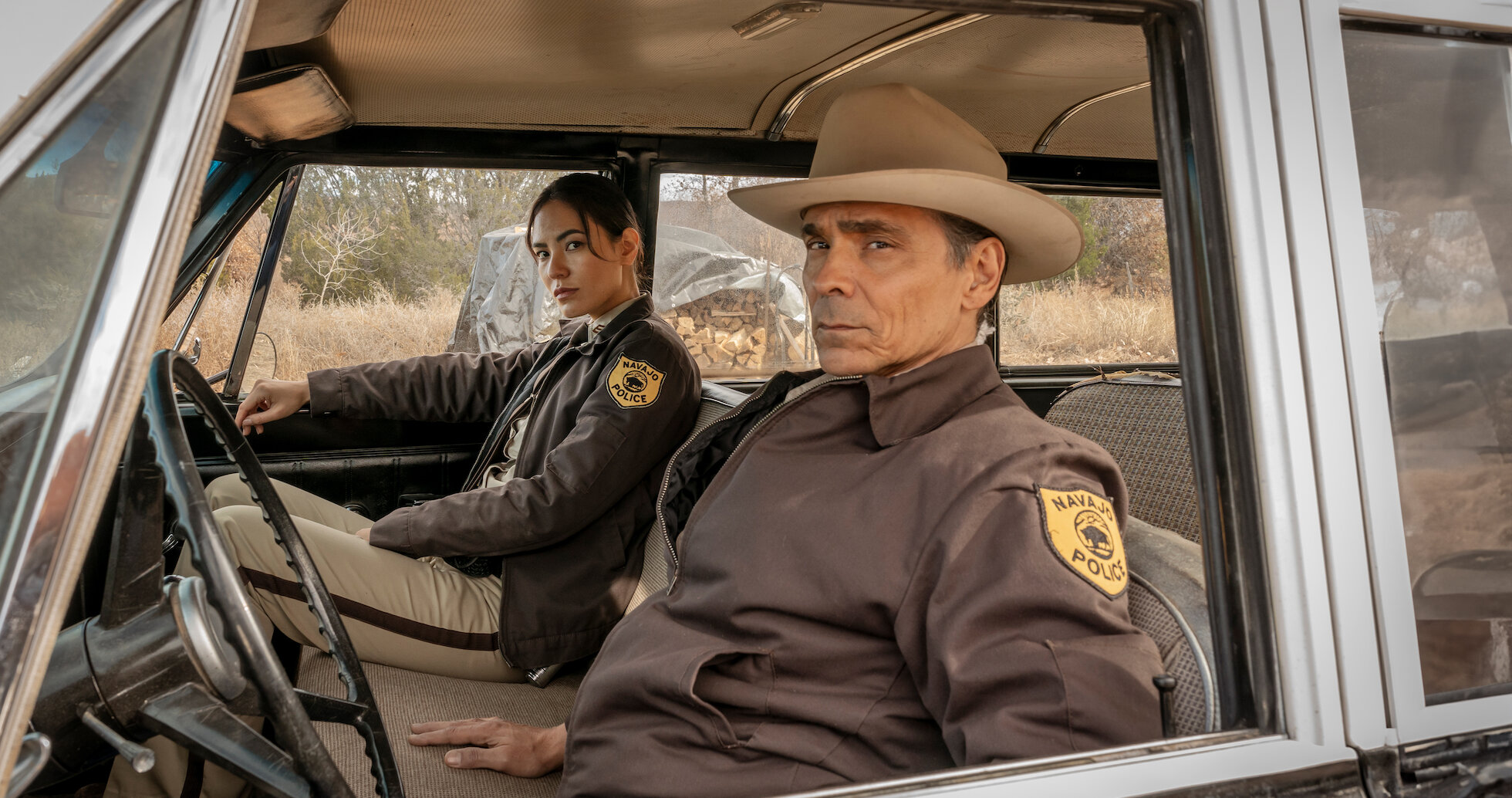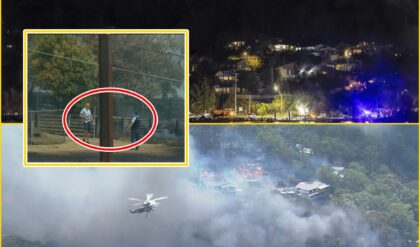Zahn McClarnon on Dark Winds Season 2: More Mystery, More Tension, and a Deeper Dive Into the ’70s

Zahn McClarnon has built a career on playing layered, unforgettable characters, but none has struck quite the same cultural and emotional chord as Lt. Joe Leaphorn in AMC’s Dark Winds. The 1970s-set crime drama, which premiered last summer to critical acclaim and a devoted audience, returns this week with its highly anticipated second season. For McClarnon, the show’s warm reception was gratifying — but also a testament to the hard work behind the scenes.
“It was not necessarily a surprise to me, but I was very happy that people enjoyed watching the show,” McClarnon told TVLine during a late-June Zoom interview. “I mean, it’s difficult to put together a television show. Extremely difficult. And when you get a reception like that, it makes all the hard work worthwhile.”
A Return to Navajo Country
The series, adapted from Tony Hillerman’s beloved Leaphorn & Chee novels, blends noir storytelling with Navajo culture, traditions, and history. Its unique perspective and authenticity — achieved through Native writers, directors, and actors — set it apart from other crime dramas cluttering the streaming landscape.
In Season 2, which consists of six tightly plotted episodes, Leaphorn reunites with Jim Chee (Kiowa Gordon), his former deputy now working as a private investigator. The unlikely partners find themselves chasing a relentless killer who will stop at nothing to protect a dangerous secret. Along the way, Leaphorn faces not only physical danger but also the resurfacing of old wounds that challenge both his moral compass and professional code.
More Twists, More Authenticity
McClarnon promises fans that the new season takes everything that worked in Season 1 — atmosphere, authenticity, and suspense — and turns up the intensity. “There are more twists, more layers to the mystery,” he teased. “And we go even deeper into the culture, which is really important to me and to the people involved in making this show.”
For McClarnon, authenticity is not a buzzword but a guiding principle. As one of the few Native American actors consistently leading major television projects, he has long advocated for accurate representation of Indigenous communities. Dark Winds, with its Navajo creative input and cultural consultants, is a step in that direction.
“It’s about telling our stories in our voices,” he explained. “This show puts Native characters at the center of the narrative — not as sidekicks, not as stereotypes, but as fully realized human beings.”
The ’70s Setting

Part of what makes Dark Winds so visually and emotionally distinctive is its period setting. The 1970s backdrop isn’t just aesthetic; it shapes the characters’ experiences and the obstacles they face. From analog police work to the political and cultural tensions of the era, the show uses its timeframe to add weight to the story.
“There’s a vibe to the ’70s that you just can’t replicate in a modern setting,” McClarnon said. “The cars, the clothes, the music — all of it adds to the atmosphere. But beyond that, it was a time of change, of questioning authority, and that plays into the themes of the season.”
A Partnership Tested
Central to the narrative is the uneasy partnership between Leaphorn and Chee. In Season 1, their relationship was complicated by personal history and conflicting priorities. In Season 2, those tensions resurface as the two men are forced to work together while confronting their own demons.
“Leaphorn is still grieving and still angry about the loss of his son,” McClarnon explained. “That pain informs everything he does. Chee, on the other hand, is trying to find his own path outside the force. When they’re thrown together, it creates friction, but also moments of real connection.”
A Killer in the Shadows
The season’s central antagonist, Colton Wolf (Nicholas Logan), emerges as one of the most dangerous foes Leaphorn and Chee have ever faced. Introduced in the season’s gripping cold open, Wolf is a ruthless assassin whose actions tie into the broader conspiracy surrounding oil interests, family tragedy, and buried secrets. His presence raises the stakes dramatically, forcing Leaphorn to confront not just external threats but the ghosts of his past.
Why Dark Winds Matters
While the show delivers plenty of edge-of-your-seat suspense, McClarnon believes its true importance lies in its cultural impact. “People are connecting with the story because it feels real,” he said. “The Navajo Nation is not a backdrop — it’s the heart of the show. And audiences, Native and non-Native alike, are responding to that authenticity.”
The success of Dark Winds comes at a time when television is under increasing scrutiny for representation and inclusivity. Its existence, and the enthusiastic response it has received, proves that audiences are hungry for fresh perspectives and stories that have long been overlooked.
Looking Ahead

For McClarnon, the return of Dark Winds is not just a professional triumph but a personal one. “It means a lot to be able to bring this story to life and to work with so many talented Native actors and crew,” he said. “It’s more than just a TV show — it’s a chance to show people a world they might not have seen before.”
As Season 2 premieres this week — Thursdays on AMC+ and Sundays on AMC proper — fans can expect more twists, more authenticity, and more of that unforgettable ’70s vibe that made the first season such a breakout hit. And if Zahn McClarnon’s words are anything to go by, the best may be yet to come.


